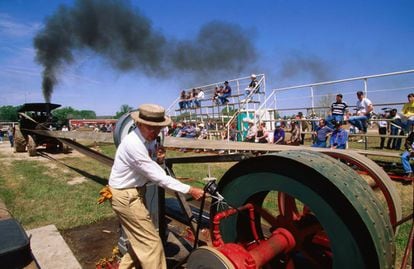When the machines take over
When new technologies create unemployment, the presence of a welfare state able to redistribute wealth can help workers to absorb this negative impact

What happens when machines take over? When robots, powered by Artificial Intelligence, can do almost everything better than humans – and the only jobs left are for very specialized workers? When will workers substituted by the machines adapt and find new jobs, and when will they revolt, and try to resist the introduction of new technologies?
In a recent scientific article, we try to answer to these questions by studying the “Captain Swing riots,” an episode in the history of England that offers interesting parallels with the current situation. The riots happened in 1830: for more than two years, English rural workers revolted against their landlords: they burned farms, killed cattle and destroyed agricultural machinery. In our paper ‘Rage against the machines,’ we show that the most important driver of the riots was the adoption of a new technology: the threshing machine. But to understand how this new technology led to riots, we need to look 30 years before the start of the revolt.
At the beginning of 1800, the majority of the English population lived in the countryside and worked the land of wealthy landlords. In the winter, jobs were scarce, and most of the rural workers earned a living by threshing cereals. Each worker used a stick to beat the raw cereals until the grains fell from the rest of the plant. While the occupation was labour intensive and very heavy, for most people it was also the only source of income during the whole winter.
The situation changed rapidly at the beginning of 1800, when threshing machines started to appear on English farms. The new machine allowed to perform the work of an entire village with the help of only a few men. As a result, rural workers living in places that introduced these machines lost their winter job, and with it the only source of living during that season. The situation deteriorated progressively until 1830, when discontent finally broke out and workers revolted across the whole island.
In the article we use historical sources to reconstruct the location of machines and riots, and use this information to demonstrate that the adoption of new technology caused unrest. These results tell a cautionary tale, because they suggest that when new machines substitute workers and create too much “technological unemployment” workers may fight back and resist the change.
But what exactly went wrong in 1830, and why have we not experienced anything similar in recent years? One answer is that recent innovations, while often disruptive, have not affected simultaneously as many people as threshing machines did in 1800, when they destroyed the jobs of the large majority of rural workers.
A second answer may have to do with the welfare system. In 1800, British parishes offered welfare support to people living in poverty. The system was decentralized, and every church provided different levels of support. We collected information on the generosity of different churches across the country, and find that where poor workers received more generous support, the new machines did not cause riots. This suggests that when new technologies create unemployment, the presence of a welfare state able to redistribute wealth can help workers to absorb the negative impact of the machines, and adapt to the new situation.
Bruno Caprettini is a post-doctoral fellow at the Department of Economics of the University of Zurich. (Brunocaprettini.com)